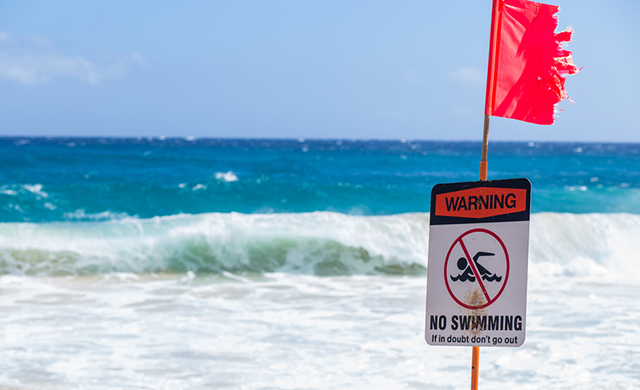
Beach Safety: Sun, sand and safety.
07/24/2018 03:38PM | 5395 viewsEvery summer, people pack their bathing suits, sunscreen, flip flops and a good book for a trip to the beach. Or, perhaps where you live, you are fortunate to have beach weather for the greater part of the year. Regardless of how often you get to sink your toes into the sand, the American Red Cross has some beach safety tips and steps you can take to be make sure you and your family remain safe.
Ocean Safety
Swimming in the ocean takes different skills, so before you get your feet wet, it’s best to learn how to swim in the surf. You should also swim only at a lifeguard-protected beach, within the designated swimming area. Obey all instructions and orders from lifeguards.
While you’re enjoying the water, keep alert and check the local weather conditions. Make sure you swim sober and that you never swim alone. And even if you’re confident in your swimming skills, make sure you have enough energy to swim back to shore.
Other beach safety tips to keep in mind:
- Have young children or inexperienced swimmers wear U.S. Coast Guard-approved life jackets in and the around water. No one should use any other type of floatation device unless they are able to swim.
- Don’t dive headfirst—protect your neck. Check for depth and obstructions before diving, and go in feet first the first time.
- Pay especially close attention to children and elderly persons when at the beach. Even in shallow water, wave action can cause a loss of footing.
- Keep a lookout for aquatic life. Water plants and animals may be dangerous. Avoid patches of plants. Leave animals alone.
Rip Currents
Rip currents are responsible for deaths on our nation’s beaches every year, and for most of the rescues performed by lifeguards. Beachgoers should be aware of how dangerous rip currents are, and swim only at beaches with lifeguards in the designated swimming area. Rip currents can form in any large open water area, such as low spots and breaks in sandbars, or near structures such as jetties and piers.
For your safety, be aware of the danger of rip currents and remember the following:
- If you are caught in a rip current, stay calm and don’t fight the current.
- Swim parallel to the shore until you are out of the current. Once you are free, turn and swim toward shore.
- If you can't swim to the shore, float or tread water until you are free of the rip current and then head toward shore.
- If you feel you can’t make it to the shore, draw attention to yourself by waving and calling for help.
- Stay at least 100 feet away from piers and jetties. Permanent rip currents often exist near these structures.
- If someone is in trouble in the water, get help from a lifeguard. If a lifeguard is not available, have someone call 9-1-1.Throw the victim something that floats – a lifejacket, cooler, inflatable ball and yell instructions on how to escape the current.
- When at the beach, check conditions before entering the water. Check to see if any warning flags are up or ask a lifeguard about water conditions, beach conditions, or any potential hazards.











Post your Comment
Please login or sign up to comment
Comments